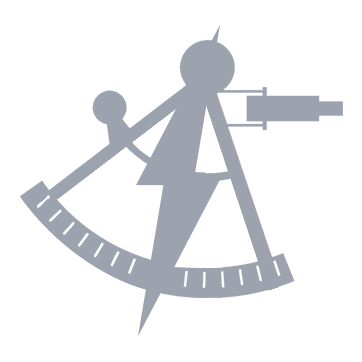When the Klingons liked something, they stuck with it. With only minor variations between the dozens of models produced, the B’Rel-class bird of prey had remained a dangerous predator for over a hundred years. So far, its presence in the Archanis Eta system had been benign. It appeared to be siphoning off hydrogen from the system’s sun, but that also made it difficult for the Starfleet team aboard the Mare Imbrium to track. Lieutenant Bowens kept as close an eye on it as he could from one of the sensor consoles in the amidships compartment while he waited for the sensor logs from the Orion freighter to finish downloading.
The runabout’s computer was hard at work parsing the data. With the survey module attached, it was doing it at a decent pace, too: so far, it had identified three D’Ghor starships by hull composition and warp signature. That data would be invaluable for Starfleet Intelligence and it could lead to clues about the raiders’ base of operations. If they got killed trying to leave the system, it would all be for naught, though. The Orion refugees presented even more of a problem for Bowens, as he was bound by regulations to help them if he could. Still, he was bound by his orders not to engage and his mission to get any helpful information on the D’Ghor back to command.
Lieutenant Serala had managed to establish a dampening field around them and the station housing the refugees. It was a more robust and sophisticated version of the ones the Orions themselves had been using, and it made them appear not as a sensor dead zone but as a mass of useless carbon floating through the asteroid field. It would work for a time, but if the Klingons saw through that ruse, they would be forced to flee. A runabout, after all, was no match for a Klingon warship of any size.
No one was thrilled about the idea of abandoning the refugees, but Ensign Taom, the team’s resident science officer and medic, had been especially doe-eyed about the whole situation. When he’d heard the plan was to flee rather than fight, Bowens saw all of the color drain from the young Trill’s features. Introverted and sensitive, he was a strange personality type for a hazard team. Still, his aptitude scores were off the charts, and he’d earned a commendation at the academy for marksmanship. Captain Lancaster had selected the hazard teams himself from among the new crew rotations, and he had a reputation for knowing exactly what he was doing.
Bowens was not surprised when Taom entered his makeshift office from the cockpit, PADD in hand. No doubt, one last entreaty to do something. Anything.
“Lieutenant?”
“Go ahead, Taom,” Bowens replied, managing not to sigh.
“I’ve done some calculations, and I believe we can bring some of the refugees aboard without degrading our maneuverability if we cap the total mass,” the ensign said, handing Bowens the information. “With adjustments to the inertial dampeners and the engine limiting software, there would be no appreciable performance difference from up to forty of the children from the station,” he said, trying and failing to sound confident.
The math was solid. Bowens chewed his lip to avoid noting that if they made those modifications to their craft, they could get a slight performance boost if they then also took aboard no one from the station. “You’re a biologist, Corvol. Did Shadi and Serala help you with this?” he asked, setting the PADD down on the edge of the console.
It wasn’t an accusation, but Taom still shifted between his feet for a moment. “Yes, sir. I wanted to make sure it was feasible before bringing it to you. And that it was supported by regulations,” he replied.
“You feel really passionately about this, don’t you?”
“I didn’t join Starfleet to put other people in danger, sir,” Taom replied. There was a surprising amount of defiance in his voice and a glint of steel in his eyes. Maybe that was the part of him that could hit a tribble between the eyes with a hand phaser.
“I didn’t either, but if it comes down to it, we have to escape with the data. It’s not nice, or right, or wholesome, but if we can help Starfleet identify where these ships are coming from, we can prevent raids like the one that destroyed their colony from happening on our side of the border,” Bowens replied.
“Permission to speak freely, sir?”
“Granted.”
“Why does it matter what side of the border they’re from? They are in need, and we have to help them. Isn’t that what Starfleet is for?!”
Bowens was taken aback for a moment. It wasn’t a big secret that Taom was a bleeding heart, but he’d never been heard to speak like that in their short time together on the team.
“This decision has nothing to do with who the refugees are if that’s what you’re saying. Suppose this were a group of Federation citizens. In that case, we’d be faced with the same choice, and the decision would have to be the same: staying here and dying trying to save this station means the failure of our mission and more attacks like this one,” the lieutenant said trying to stay measured.
“Well, if we can save even a few of them, aren’t we obligated to, given that it doesn’t put our primary mission in jeopardy, sir?” Taom asked.
“Yes.”
“But… Wait, did you say ‘yes?’”
“You win, Ensign,” Bowens said, handing the PADD back over to him. He tapped his commbadge. “Lieutenant Serala, go with Taom to the station to inform the Orions that we’re able to take up to forty children and four adults to care for them on board, to evacuate if the Klingons find us,” he said.
“Understood, sir,” Serala replied over the channel. A few moments later, she emerged from the cockpit and stood next to Taom, whose mouth was flapping slightly as he tried to stammer out a ‘thanks.’
Bowens glanced down at the progress report on the computer download. “You have twenty minutes. Be quick,” he ordered.
After the two departed, Bowens moved forward to the cockpit, sitting down next to their Andorian pilot at one of the forward stations. The longer the download took, the more chance there was the Klingons might notice them. Despite the fact that they could scream at the top of their lungs, and it wouldn’t make them any easier to detect through the vacuum of space, the room was quiet and tense. Only the subtle chirps of the LCARS panels broke the silence as the team’s eyes darted between the tactical display showing the Klingon bird of prey on the other side of the system and the countdown of the download.
“L-T, they’ve switched to active scanners,” Chief Zhou reported. “They’ll find the dead zone if they’re looking closely.”
Fuck. Bowens bit that exclamation back as he looked at the download clock. “Three minutes to go. Better hope that they don’t notice us,” he said, keying in a few commands to the helm. “I’m priming the explosive bolts in the umbilical connections.”
“Serala to Bowens. We are beginning to board the agreed-upon number of refugees in the lower compartment,” the Vulcan lieutenant reported.
“Make it quick, Serala. We might have company soon.”
“Acknowledged.”
Bowens turned around to look at Zhou. “Get down there and help Serala and Taom. We can’t risk a panic or a stampede onto the runabout,” he ordered. He didn’t wait for her to acknowledge him before turning back to the console.
There were no easy decisions here: leaving the refugees to the Klingons was not acceptable, but neither was losing the data. It would be different if he were a starship captain, as his obligations would be different, but he wasn’t. He had strict orders from the top of the Fourth Fleet’s command structure, and he couldn’t be sentimental about following them.
“The computer link from the freighter should allow us to collect data for a few minutes after we leave, too,” Ensign Shadi noted. It sounded like an idle comment, but it made the wheels in Bowens’s mind start turning.
“Really? What’s the range on that transmitter you built?”
“About five million kilometers, give or take. There’s some latency at ranges over a hundred thousand, but it’s a low-power subspace transmitter I took from the buggy in the hold. It’s meant to keep a surface team in contact with the runabout even at relatively long distances.”
Five million kilometers wasn’t that far in interstellar terms, less three percent of an AU, but it was well outside the range of most starship-based targeting sensors.
“Does the link include access to their flight control systems?”
“Sure. We have their whole computer. Uh… Why?”
“We didn’t detect a warp signature when we entered the system, but maybe they were able to track down the freighter based on its exit vector from the battle… They’re probably looking for it,” Bowens replied. “We can use it to lure them away.”
“Won’t they then find an empty freighter and know something’s up?”
“They’re not going to find anything,” Bowens replied, grinning to himself. “Shadi. Taigan. Get your suits back on and get out there to remove the moorings from the freighter. Phaser them if you have to,” he ordered.
The Orion and Bajoran looked at each other before scrambling out of the cockpit as Bowens had the computer begin to build an interface with the freighter’s flight control software. He could see the Klingons on the scanners lazily drifting in their general direction, but no sign that they’d noticed them yet. That would change as soon he fired up the freighter’s impulse engines, though, but with this plan, there was at least a chance he could get them away from the Orions.
“Thonan, as soon as we can, I want to send that freighter away. Make it look like it’s fleeing. Once we’re sure the Klingons see it, we’ll detach ourselves and follow to keep control. You’ll handle the runabout, and I’ll fly the freighter remotely,” Bowens said.
“Understood, sir. But if I may?”
Bowens nodded.
“If we put the freighter on autopilot, we could head in the opposite direction instead,” the Andorian replied. He had a point; they could use the freighter purely as a diversion and escape in the process.
“I don’t have time to teach an Orion autopilot what the word kamikaze means, Ensign,” Bowens replied, grinning.
“Sir?”
“I don’t know what the Andorian equivalent is, but you’ll see in a minute.”
Down below, the Mare Imbicum’s lower module was packed to the gills with Orion children and the four lucky adults who had been deputized to take care of them. From what Serala and the still-grateful Taom has reported, there hadn’t been any sort of panic as the refugees quickly made decisions on who got to leave—the youngest children had been selected, as well as the youngest four adults, reasoning that they had the most life left to live.
“Download complete,” the computer reported.
“Finally. Beginning engine start sequence,” Bowens said, feeling himself much more in his element with a flight control problem to solve in front of him rather than a diplomatic one.
The freighter had been heavily damaged when it left Klingon space, but the engines were still functional. They powered up slowly, and as predicted, Bowens saw the Bird of Prey turn to come on a direct heading for them.
Bowens had spent a tour on an Intrepid-class ship, and a crippled Orion tanker was far from what he was used to, but he set a heading towards the edge of the system and pushed the impulse engines as far as he could. ‘As far as he could’ wasn’t very far, though. It’s not like it was a hotrod at full power, anyway.
“We will need to separate from the station to stay within range within one minute, forty-five seconds,” Thonan noted. Bowens nodded, hand over the button that would separate them from the station. He wanted to wait until the very last possible moment to keep the additional power flowing to the dampening field. The Klingon ship was still far out from the freighter, but they were speeding up.
“Hit the engines on my mark,” Bowens said. He hit the button to seal the airlock and retract the cofferdam before blowing the bolts holding the umbilical cables. “Mark.”
The Mare Imbrium left the station with about ten seconds of range left, and Thonan kept them about four million kilometers back to reduce the chance the Klingons would notice them. Bowens started dumping all the extra power he could find into the freighter’s engines, as life support and other extras like gravity plating weren’t needed anymore.
“The Klingons will be in weapons range of the freighter in about twenty seconds,” Taigan reported.
“I see them,” Bowens said, slowing the freighter down slightly by cutting power to one side of the impulse array, which made the ship list. The Klingons didn’t slow, but they also weren’t firing on it yet, evidently wanting to make this kill a little more personal.
The Klingons didn’t seem to notice, though that the ‘list’ got slightly more pronounced, and the Orion ship started to turn, slowing almost to a stop as it repositioned itself. When they were right on top of them, though, Bowens released the reactor containment fields.
The Orion ship’s impulse engines exploded first, followed by the remaining deuterium fuel in one of the storage tanks and the antimatter storage pods. It was enough to briefly blind the Mare Imbrium’s sensor arrays, but when they were restored, Bowens could see a plasma fire had been started in the bird of prey’s starboard warp nacelle, and the small raider’s shields were down. It wasn’t the outright destruction he had been hoping for, but they were on much more level footing.
“Thonan, hit the impulse engines and take us into the asteroid field. If the Klingons want us, they’re going to have to come and get us,” Bowens ordered.
“Aye,” the Andorian pilot replied, sending the ship on a rapid course towards the relative safety of the asteroids. Bowens felt the adrenaline rush of space combat mingling with disappointment at his plan falling short, but he didn’t have much time to focus on the negatives before the Klingons started following them.
“I bet they’re pissed,” Chief Zhou said. “I would be.”
“Well, it’s good that you’re on our side, then,” Bowens noted. The runabout rocked when it was struck by a feeble blast from the B’rel’s forward weapons. “I’m guessing that we managed to damage their EPS grid since we’re still alive.”
“I’m reading massive damage to most systems over there, but they’re still coming for us,” Taigan reported. “They’re sending out a distress call, sir!”
“Begin transmitting our data back to Starfleet and send out a call of our own,” Bowens reported. “We just need to stay alive long enough to finish broadcasting.”
Thonan was doing an excellent job of diving around the asteroids, and Bowens resisted the urge to take control so that he could focus on trying to see the big picture.
“I have a firing solution with aft weapons,” Taigan reported.
“Let ‘em have it, Ensign.”
With its scouting equipment, the Mare Imbrium wasn’t heavily armed, but they did have an aft phaser strip, in addition to the two that popped out from between the nacelles on the tactical drums. Taigan rotated them aft to get three streams of fire lancing out against the Klingons. A runabout-class phaser was unlikely to make much of a dent to the shields of a fully-functional Klingon bird of prey, but in its damaged state they managed to at least give them pause.
The Klingons returned fire, but the runabout’s shields held. The two combatants kept up their dance through the asteroid field, careening between the rocks and trading pot shots for several interminable minutes, before the Klingons broke off pursuit.
“Sir! They’re on a direct heading for the station.”
“Pursuit course. Load torpedoes,” Bowens replied. They had a dozen micro-torpedoes slotted into a launcher under the cockpit. They were meant to help the runabout fend off fighters and other craft like that, but it’s all they had. One last try to save the Orions.
“Sir, there’s another ship entering the system at high warp,” Taigan replied.
“Ignore them and focus on the bird of prey.”
The Mare Imbrium closed on the B’Rel, which was peppering them with fire from one of the aft light disruptor banks, and their shields were starting to weaken.
“Shields to twenty percent!”
“Fire torpedoes,” Bowens ordered. As he did so, though, there was a flash, and a massive starship came into view in front of the bird of prey. The round blue deflector marked it clearly as a friend and not an enemy. The B’Rel banked left immediately, but they were caught first in a tractor beam from the Odyssey-class ship, and then a salvo of full-size quantum torpedoes belted out from twin launchers under the ship’s saucer section, connecting at the same time as the feeble miniature ordnance from the Mare Imbrium. The combined firepower obliterated the Klingon ship.
“Lieutenant, the Arcturus is hailing us,” Serala replied.
Bowens blinked at that. He thought he recognized the distinctive lines of Starfleet’s newest Odyssey-class ship, but he assumed it was one of her sisters out of the yard early, as she was supposed to be finishing an overhaul following a short campaign against the Breen.
“On screen.”
The screen next to the helm switched to the interior of the Arcturus’s bridge, which was lit by dimly pulsing red lights. Captain Lancaster was in his early thirties but bore a preternaturally serious expression.
“Lieutenant Bowens, I am told that Admiral Seagraves ordered you not to engage the enemy,” Lancaster said, sounding altogether more terrifying than the admiral had been. “Explain.”
“Yes, sir. In my judgment, the mission parameters changed when we were forced to defend a group of asylum seekers in this system, combined with the presence of a Klingon vessel in this system that left us unable to either retreat or transmit our intelligence without being detected,” Bowens replied, feeling compelled to sit up straight. “I had just started sending our data back to command. I’m transmitting a copy to you now.”
Lancaster frowned and glanced over at the Arcturus’s first officer. “Very well. I’ll withhold my opinion until I read your full report. Lower your shields so we can beam your passengers aboard, and then we’ll retrieve the ones we detected on our way in,” the captain ordered. “Please convey my congratulations on a job well done to your team… pending receipt of your report,” Lancaster replied. “Arcturus out.”
Bowens sat back in his chair with a relieved sigh. “I don’t know about the rest of you, but provisional or not, I’ll take the pat on the back,” he said.

 Bravo Fleet
Bravo Fleet






